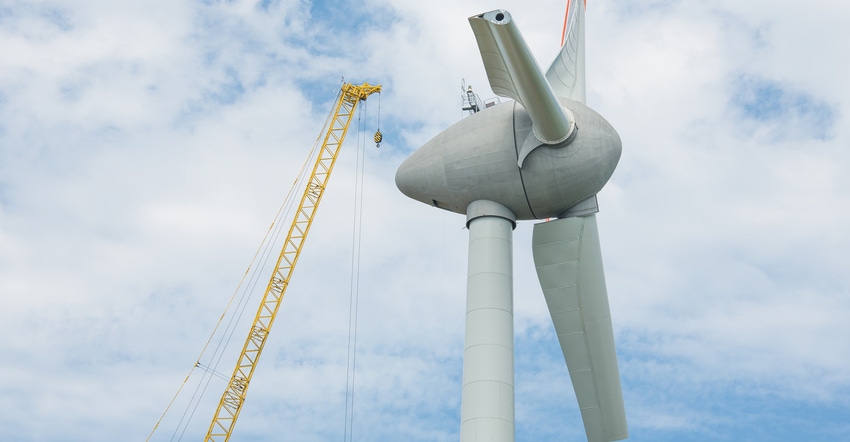January 1, 2018

The story “Just how big are those wind turbines?” that appeared in the December 2017 issue of Indiana Prairie Farmer and online resulted in unexpected responses. The purpose of the story was twofold: to inform about how big and massive turbines are through an accompanying infographic, and to report on the latest wind farm operating in Indiana. This one consists of 57 turbines in Jay and Randolph counties.
Some took the article as a glowing endorsement of wind energy, which wasn’t the intent. Wind energy, like solar energy and most other alternative energy sources, has pluses and minuses. Readers soon made us keenly aware of the minuses, as they see them.
What we didn’t realize was just how polarizing a current proposed wind energy project in Fulton, Cass and Miami counties and another possible project in Montgomery County could be. The futures of those projects still appear uncertain. Objections in Cass County even caught the attention of Indianapolis TV news outlets.
Indiana Prairie Farmer is delving into both sides of the wind energy debate and will report in the future. Right now, however, let’s look at what happens when certain issues in agriculture become controversial.
Personal stake
It’s easier to support a wind energy project that could generate income in a rural county, or a livestock operation that might also generate property tax income, if it’s not in your backyard. If you’re the person living in the shadow of a wind turbine, it becomes much more personal. We get that point.
Where things tend to go off the rails is when emotion becomes so intense that it may affect judgment. If you have an emotional interest at stake, do you take time to check out the validity of sources who offer information supporting your case? And yes, this process works both ways. Those on the other side, in favor of a project, must make sure their information is credible as well.
Justin Schneider, a lawyer and director of state government relations for Indiana Farm Bureau, has talked with people on both sides of the wind energy debate in the past. In one instance, someone against a project insisted it was because the setback from houses wasn’t adequate. The reality was that the person simply didn’t want the project in their area, period, Schneider determined.
Similar story
The opposition to a project like a wind energy farm mirrors cases where neighbors have opposed a new confined livestock operation in many ways, says Greg Slipher, IFB livestock development program coordinator. “A wind farm is much larger than a proposed confinement operation, and more people could be impacted, so there might be a larger reaction,” he notes. “But people who oppose new confinement operations are often those living close by who will be directly impacted.”
Slipher adds that often, opponents to new livestock operations have heard rumors about effects on their children’s health or water quality, air quality and odor. What he tries to do is make sure everyone has fact-based information. If people stick with facts and sift out emotion, to any degree, decisions made in a community are usually better thought-out, no matter how the issues end, he says.
Determining what information is science-based and separating out emotion isn’t easy. But to whatever extent members on all sides of any rural issue can accomplish this, the odds of coming up with the best long-term solution for everyone go up.
Comments? Email [email protected].
You May Also Like




